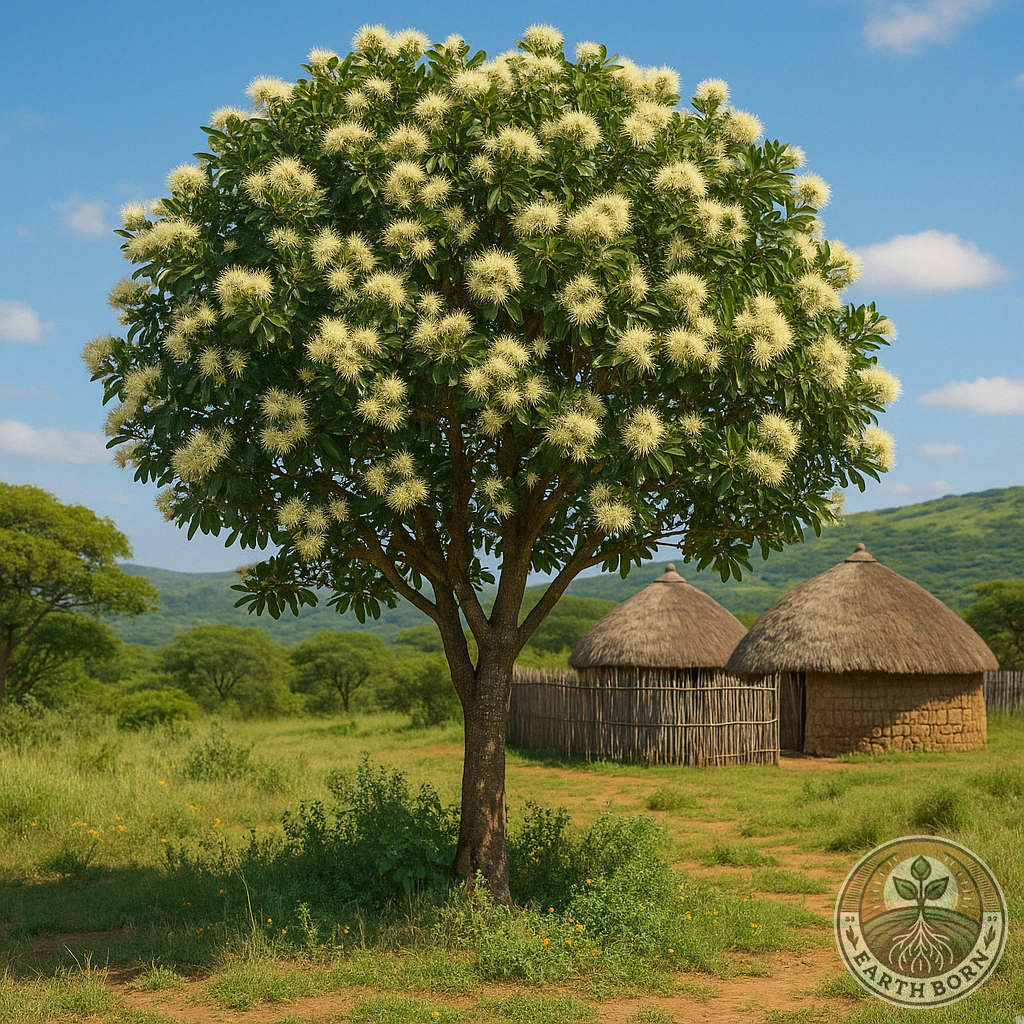
The Water Berry, also known as Umdoni, Waterboom, or Umthombothi, is a hardy evergreen tree native to Southern Africa, including South Africa, Zimbabwe, and Botswana. Belonging to the Myrtaceae family, it is cherished not only for its beauty and shade but also for its nutritious fruit and healing properties. Let’s explore how you can grow and benefit from this incredible indigenous tree.
💊 Medicinal Benefits
Water Berry has been widely used in traditional African medicine. Its leaves and bark are rich in phenolic compounds and triterpenoids, giving it potent antioxidant, anti-inflammatory, and antimicrobial effects.
-
Digestive Aid: Leaf decoctions help soothe stomach issues and treat diarrhea.
-
Anti-inflammatory Relief: Bark infusions are traditionally used to reduce inflammation.
-
Wound Treatment: Crushed leaves are sometimes applied topically to aid wound healing.
🛑 No major side effects have been reported, but consult a qualified herbalist or medical professional before use.
📅 When to Plant (South Africa)
Plant Water Berry during spring (September to November), when temperatures begin to rise and rainfall increases.
-
Seed Germination: 2–3 weeks
-
Transplanting: After 6–8 months of growth
-
Fruit Harvest: Begins in the 2nd to 3rd year
🏡 Where to Plant
Water Berry is best planted directly into the ground. It thrives along riverbanks, ponds, or wetlands, but will also grow well in typical garden settings if kept moist.
☀️ Soil, Water & Sunlight Requirements
-
Soil: Rich, loamy soil with good drainage
-
Watering: Keep soil consistently moist—mimicking its natural riparian habitat
-
Sunlight: Prefers full sun, but tolerates partial shade
-
Feeding: Apply compost or a balanced organic fertilizer every 3 months
📏 Spacing & Growth
-
Height: Can reach 10–15 meters tall
-
Spread: Up to 5–7 meters wide
-
Spacing: 3–5 meters between trees to allow for mature growth
🌼 Flowers & Fruit
-
Flowers: Showy white to pale pink, clustered at branch tips in early summer
-
Fruit: Purple-black, berry-like, edible, and rich in vitamin C—loved by birds and people alike!
🐝 Companion Plants & Common Pests
-
Companions: Indigenous grasses and wetland plants make ideal companions
-
Pests: Watch for fruit flies, scale insects, and aphids
-
Treat with neem oil or insecticidal soap if infestations appear
-
🎉 Fun Fact!
The Zulu people regard the Water Berry as a sacred tree often planted near kraals and rivers. It is also a favorite among wildlife—providing nectar for bees, fruit for birds, and shade for livestock.
🌱 Summary & Call to Action
Whether you’re planting for medicine, fruit, shade, or beauty, the Water Berry is a rewarding indigenous tree to grow. With its low-maintenance nature, ecological benefits, and rich cultural heritage, it’s a perfect addition to any garden or farm in Southern Africa. 🌍
👉 Plant yours this Spring and join the movement to restore native flora.
#EarthBornGrower #WaterBerry #SyzygiumCordatum #IndigenousGardens #MedicinalTrees #GrowYourMedicine


 **Meet Sprout!** Sprout is your friendly gardening companion at Earthborn, always ready with helpful advice on plant care, medicinal herbs, and natural gardening solutions. From seedling to harvest, Sprout provides expert guidance to nurture your garden and your well-being—making gardening easy, fun, and naturally rewarding.
**Meet Sprout!** Sprout is your friendly gardening companion at Earthborn, always ready with helpful advice on plant care, medicinal herbs, and natural gardening solutions. From seedling to harvest, Sprout provides expert guidance to nurture your garden and your well-being—making gardening easy, fun, and naturally rewarding.
